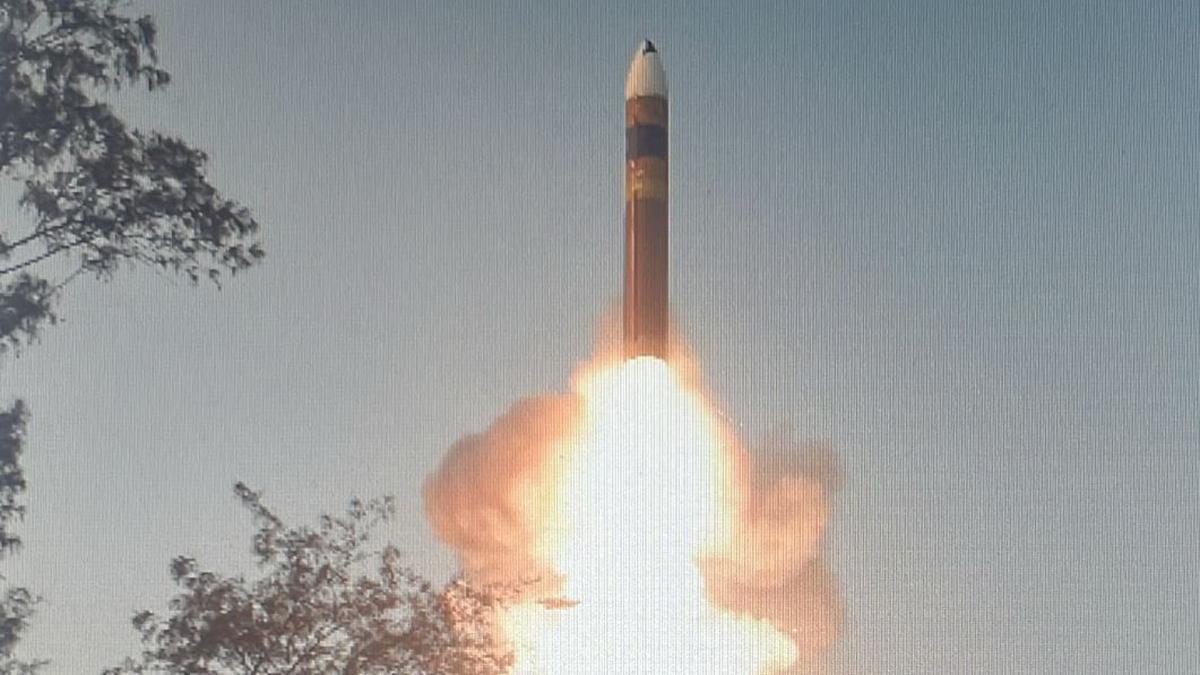Agni-5 'bunker buster': Will India's 7,500-kg monster change the face of future wars? | Opinion
When American B-2 bombers dropped GBU-57/A Massive Ordnance Penetrators on Iran’s deeply buried Fordow nuclear facility on June 22, it wasn’t just an operation—it was a wake-up call. Across the world, military analysts, strategists, and defence planners took note. The message was clear: future wars may not unfold in open fields or skies, but deep beneath the earth.
Ad
Integrated. Intelligent. In Control.
Canon
Learn more
India, always mindful of the changing face of global conflict, has responded with urgency and clarity.
In a decisive move that blends technological innovation with strategic foresight, India's Defence Research and Development Organisation (DRDO) is fast-tracking the development of a powerful new weapon: a modified variant of the Agni-5 missile equipped with a massive 7,500-kg conventional warhead.
This advanced variant is reportedly being engineered to destroy heavily fortified underground structures—penetrating as deep as 80 to 100 meters of earth—making it one of the most formidable non-nuclear weapons in existence.
Engineering Marvel: The Deep Penetrator
The Agni-5, in its conventional form, maintains its original 17.5-metre length and 2-metre diameter but incorporates structural changes to accommodate the massive warhead while ensuring aerodynamic stability and precision guidance.
Weighing around 50,000 kg, the missile uses an advanced navigation system combining ring laser gyros, accelerometers, and solid-fuel propulsion across all stages, with flexseal thrust vector control for dynamic course correction.
 Related video: India’s Robotic Soldiers Are Coming | What It Means for Warfare (Indiatimes)
Related video: India’s Robotic Soldiers Are Coming | What It Means for Warfare (Indiatimes)
Loaded: 9.92%
Play
Current Time 0:02
/
Duration 3:01
Quality Settings
Subtitles
Fullscreen
Indiatimes
India’s Robotic Soldiers Are Coming | What It Means for Warfare
Unmute
0
View on Watch
Warhead Capability and Penetration Depth
The 7,500-kilogram warhead is being crafted using high-strength materials and shaped-charge technology, specifically engineered to break through layers of reinforced rock, concrete, and steel with precision and force. DRDO estimates it can reach up to 100 meters underground before detonation—surpassing most conventional systems globally.
For comparison, the US GBU-57 Massive Ordnance Penetrator can penetrate approximately 60 metres of soil or 18 metres of reinforced concrete, with a compressive strength of 5,000 psi. The Agni-5 missile is expected to match—and in some metrics, is likely to exceed—this penetration capability, while offering far greater deployment flexibility.
Dual-Mode Destruction: Bunker Busting and Airburst
Adding versatility, DRDO is also set to integrate an airburst option into the Agni-5’s warhead. This will allow it to detonate above the surface, unleashing high-velocity shrapnel across a wide radius—ideal for neutralizing airfields, command centres, and surface military assets near the primary impact site.
Ad
12% Discount on First Premium
Max Life Term Insurance

Range and Tactical Reach
While the nuclear-capable Agni-5 has a range exceeding 7,000 km, the conventional bunker-buster variant is expected to maintain a range of 2,000–2,500 km. This trade-off will enable the missile to carry the heavier warhead while still reaching strategic locations within India's extended neighbourhood.
Missile vs. Aircraft Delivery: A Strategic Shift
By opting for a missile-based approach over an aircraft to deliver its bunker buster, India can gain significant advantages:
- Stealth and Safety: The Agni-5 could be launched from deep within Indian territory, far from enemy air defences.
- Speed and Surprise: Capable of reaching speeds up to Mach 24 (29,400 km/h), it would allow minimal reaction time for adversaries.
- All-Weather, Mobile Deployment: Launched from a sealed canister on a road-mobile platform, it ensures rapid, secure deployment under any condition.
A Global Arms Race Underground
As global military powers shift critical infrastructure underground, India is responding with its own answer to America’s GBU-57 and South Korea’s Hyunmoo-IV. While the US system relies on strategic bombers like the B-2 Spirit for delivery, Agni-5’s road-mobile launcher will ensure higher survivability and lower logistical cost.
Ad
Mcleod Ganj In Himachal Pradesh - The 10 Best Hotels (2025) - Mcleod Ganj In Himachal Pradesh
tripadvisor.in
Learn more
Advanced Indian Technology at Its Core
This new Agni-5 variant could also benefit from the indigenous MIRV (Multiple Independently Targetable Re-entry Vehicle) technology demonstrated in March 2024 under Mission Divyastra. The precision and control systems designed to deploy four to six warheads simultaneously are now being redirected to carry a single, super-heavy payload with pinpoint accuracy.
Strategic Edge and Regional Impact
The proposed development is a bold signal of India’s strategic autonomy, showing preparedness for future threats where adversaries may hide assets underground. It enhances India’s posture not just as a nuclear power—but as a conventional heavyweight capable of precise, deep strikes.
Comparisons with US systems suggest that India could soon possess an equally, if not more, devastating non-nuclear option.
Indigenous Innovation and Materials
The Agni-5’s warhead casing uses carbon composites that can endure the high heat of re-entry. Combined with advanced ring laser gyroscopes and accelerometers, it ensures that the warhead remains on course through extreme atmospheric and structural resistance.
The entire project draws on decades of research under the Integrated Guided Missile Development Programme (IGMDP), reinforcing India’s homegrown capabilities in complex missile design and production.
Deployment Readiness and Mobility
DRDO’s design philosophy for the modified Agni-5 includes retaining its canisterised, road-mobile platform—allowing for rapid, flexible deployment from diverse terrains. This mobility not only complicates enemy tracking but also enhances survivability in the event of a conflict.
The missile’s three-stage solid-fuel engine system—originally refined during the development of Agni-III and Agni-5—is expected to be further optimised for stability and thrust, even with the significantly heavier 7,500-kg conventional warhead on board.
Preliminary reports suggest that DRDO is already conceptualising the Agni-6 platform, with ambitions of deploying up to 10 MIRVs and achieving strike ranges of over 12,000 kilometres.
In many ways, the conventional Agni-5 variant isn’t just a missile under construction—it’s a glimpse into India’s strategic future. If realised as envisioned, it could reshape the country’s conventional deterrence posture and elevate its status among the top tier of nations equipped for 21st-century warfare.
( Girish Linganna is an award-winning science communicator and a Defence, Aerospace & Geopolitical Analyst. He is the Managing Director of ADD Engineering Components India Pvt. Ltd., a subsidiary of ADD Engineering GmbH, Germany. Contact:
girishlinganna@gmail.com )
Disclaimer: The opinions expressed are solely those of the author and do not reflect the views or stance of the organization. The organization assumes no responsibility for the content shared.


 idrw.org
idrw.org








































